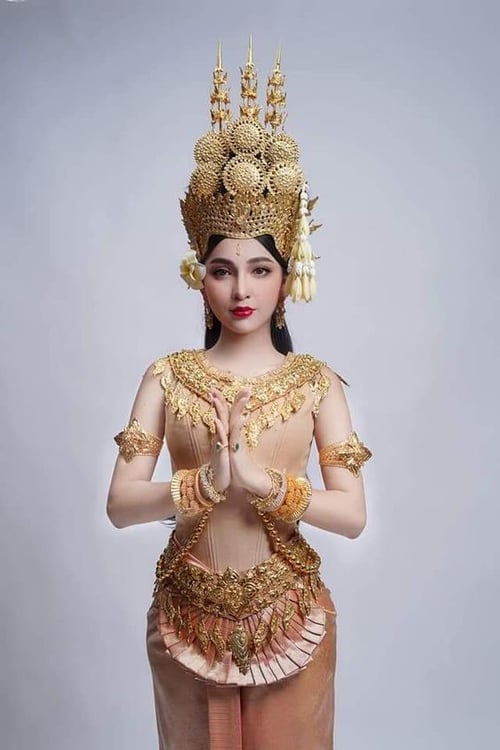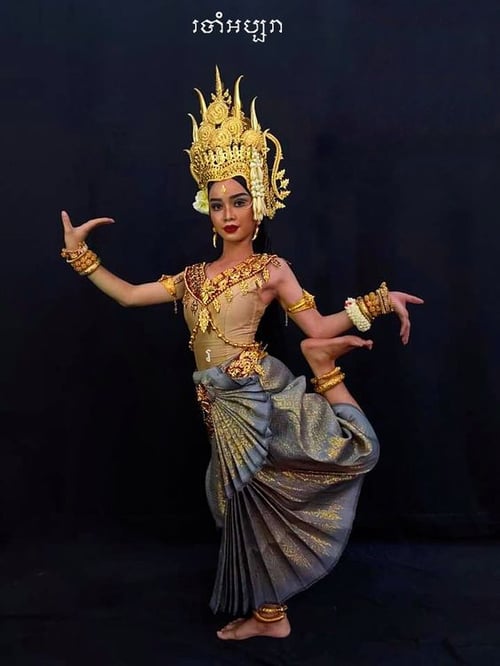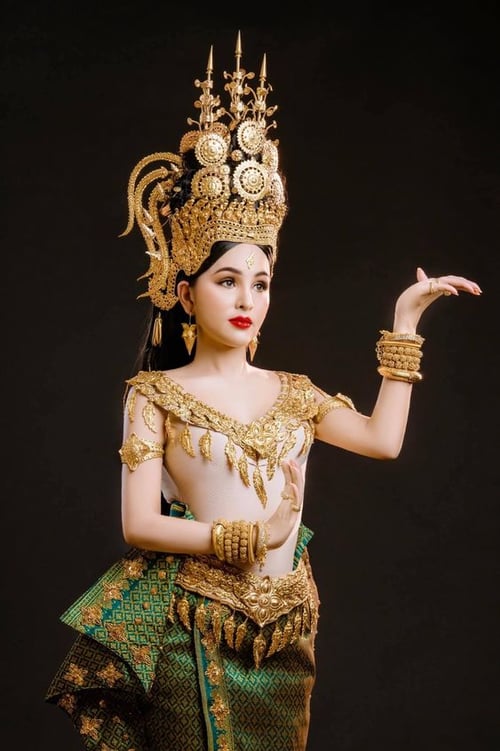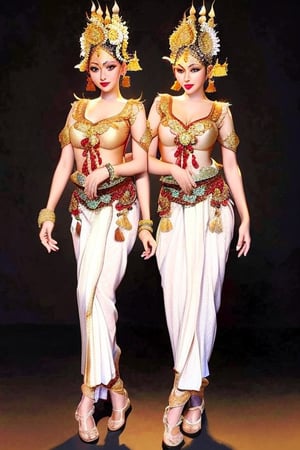The Khmer Apsara dancers are an iconic part of Cambodian culture and traditional performing arts. Apsara dance is a classical dance form that dates back centuries and is deeply rooted in Khmer mythology, history, and religious traditions. Here's more information about Khmer Apsara dancers:
Meaning and Symbolism: Apsaras are celestial nymphs or female spirits in Hindu and Buddhist mythology. In Khmer culture, Apsara dancers are seen as embodiments of grace, beauty, and elegance. Their movements and gestures are believed to imitate the celestial dancers depicted in ancient temple carvings, particularly those found in the Angkor Wat temple complex.
Dance Style and Techniques: Apsara dance is characterized by intricate hand and finger movements, subtle facial expressions, and flowing, graceful movements of the body. The dancers wear traditional costumes and headdresses, often adorned with elaborate jewelry. The dance style combines elements of ballet-like poise with distinct Khmer aesthetics.
Training and Skill: Apsara dancers undergo rigorous training from a young age to master the dance form. They train in specialized dance schools or under the guidance of experienced teachers. Learning the precise movements, expressions, and gestures requires discipline, dedication, and years of practice.
Themes and Stories: Apsara dance performances often depict mythical or historical narratives from Khmer folklore, legends, or religious tales. The stories may include themes of love, devotion, battles, or scenes from the Ramayana and Mahabharata epics. The dancers use their movements and expressions to convey emotions, characters, and events from these narratives.
Costumes and Makeup: Apsara dancers wear elaborately designed traditional costumes, which typically include a sampot (traditional Khmer skirt), a blouse, and intricate jewelry. The costumes are often adorned with golden threads, sequins, and traditional motifs. The dancers also wear elaborate headdresses and apply distinctive makeup, including colorful face paint and intricate patterns.
Cultural Significance: Apsara dance is considered a significant part of Cambodian cultural heritage. It plays a vital role in preserving and showcasing the country's artistic traditions, particularly in relation to the Angkor period. Apsara dance performances are commonly featured during national holidays, cultural events, and tourist performances.
UNESCO Recognition: In 2003, Apsara dance was inscribed on the UNESCO Representative List of the Intangible Cultural Heritage of Humanity, recognizing its cultural value and the efforts to safeguard and transmit this traditional art form to future generations.







